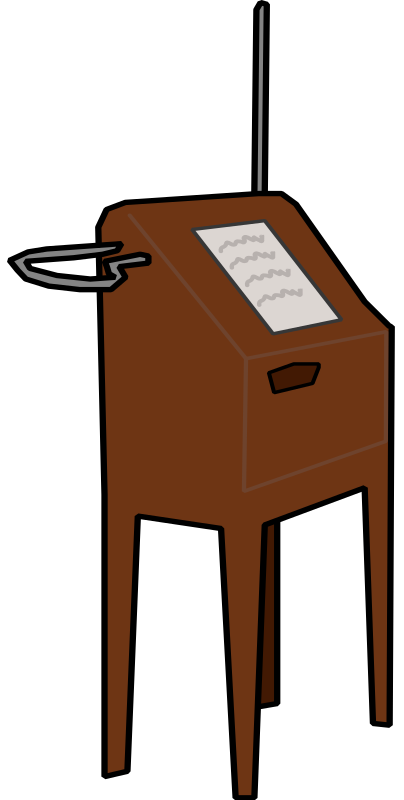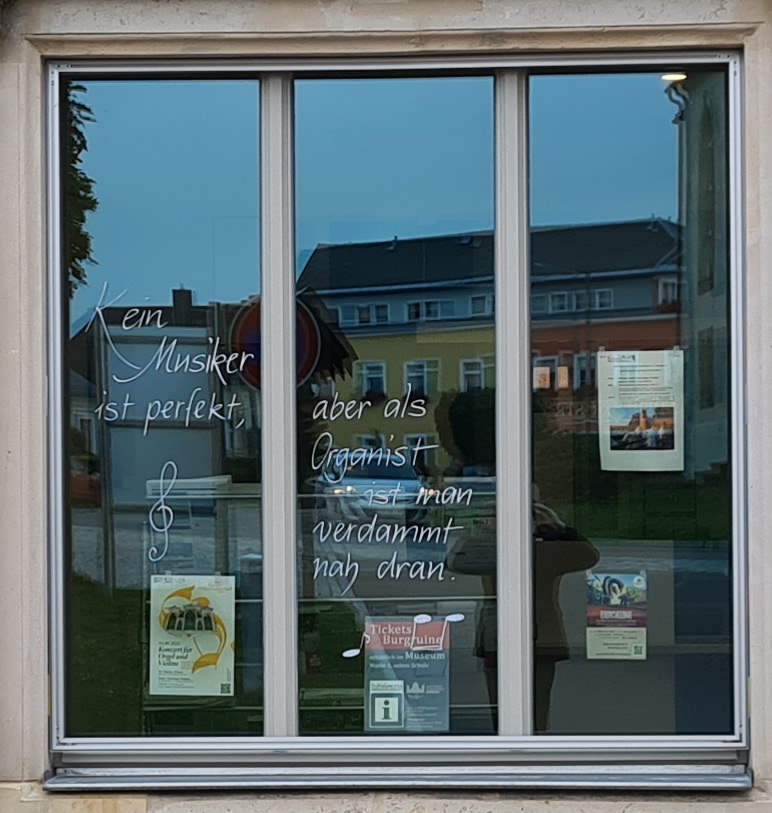Grégoire Blanc et Thomas Pellerin @ Angers Cathedral.
Category Archives: Uncategorized
Dubois organ Wissembourg – Vespers continued 2025
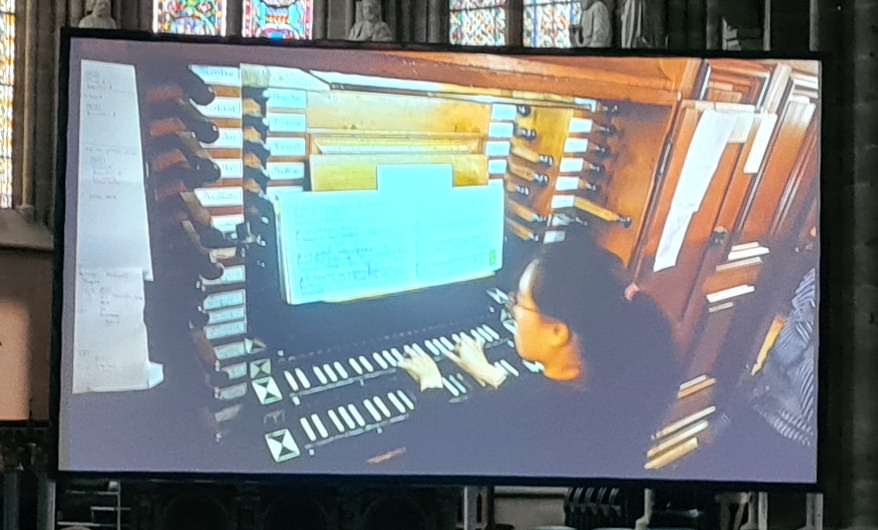
Yesterday three students of the Musikhochschule Saarbrücken performed the first concert of this year’s season. Michael Schwedt played the Suite du premier ton of Louis-Nicolas Clérambault, Helena Fontaine his suite de deuxième ton (which I also play myself) plus two pieces of Jean Adam Guilain (one of my favourite composers of the classic French organ), and Doyoung Ahn performed the pièce d’orgue de Bach plus two pièces de François Couperin.
It was a great joy and pleasure to meet friends and listen to the instrument played by young masters performing pieces composed for exactly this type of instrument.
Thanks a whole bunch to all involved.
How to get “that Moog sound”
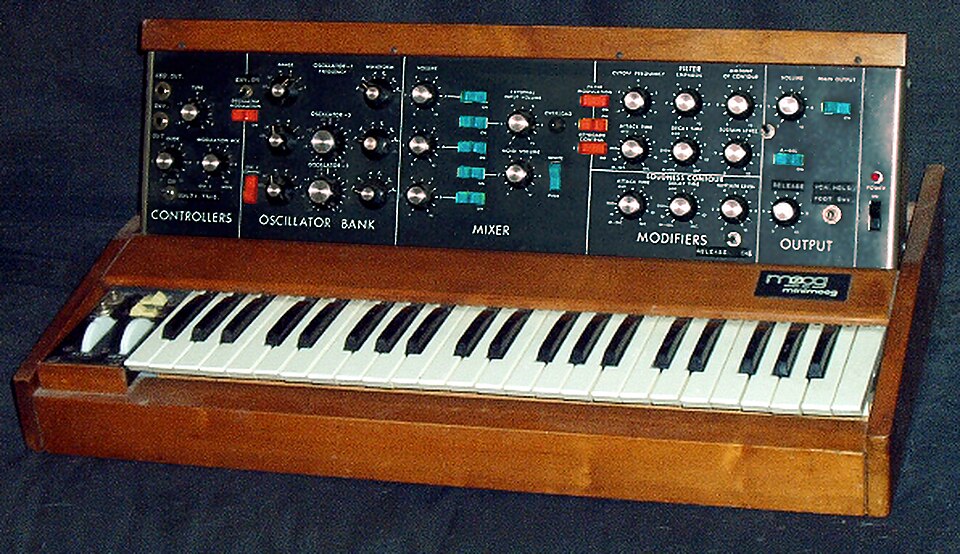
I grew up with the sound of early synthesizers, especially musicians like Keith Emerson or Chick Corea playing Moog synthesizers. Still, the Minimoog is often seen as a reference to other synths.
Of course I always wanted to have that sound right at my finger tips. However, an original Mini (or even the Voyager) was expensive to buy and service. I once owned a Sub 37 which I had to bring to the service workshop at least twice. It’s a nice synth, but it’s not a Minimoog. I sold it during the pandemic.
Behringer provided two reincarnations, the Model D and the Poly D. Both sound great, but lack memory. The Roland SE-02, developed by Studio Electronics, provides memory and sounds phantastic. However, the mini interface and its cryptic control labels make it hard to use.
A recent reincarnation was the Moog Messenger, an affordable Moog monophonic synthesizer with patch memory and lots of features to make it a modern synth. It just arrived yesterday and I am quite impressed of what it is capable of. More deep dive sessions will follow.
Music for Iberian-baroque style organs

I did attend a huge amount of concerts being performed at the biggest baroque organ of Alsace, l’Orgue Dubois de Wissembourg. As a consequence, I became familiar with baroque french, but also spanish organ music. Currently I collect a couple of Spanish works I like so as to decide which one I want to learn to play next.
I’ve chosen the term “Music for Iberian-baroque style organs” with reason. First, the Iberian peninsula today consists of two countries, Spain and Portugal (which was sliced differently during the baroque period). Due to historic reasons, both countries had a massive influence on other parts of the world. Iberian style instruments can, for example, also be found on the Balearic Islands, on the Philippines or the “new world“.
So what are »Iberian-baroque style organs«? As with the rest of Europe, no organ equals another. They are all different, depending on regional differences, time, the believes of the builder, the economic situation of the buyer and the like. But anyway, there are some characteristics that are unique to this particular school of organ building.
- Relatively small size. Those organs usually have to cope with relatively small housings. The instrument depicted above, for example, has no 8′ stop for the lower two octaves (it only has one for the upper two octaves).
- No or very limited pedalboard. In case there was a pedalboard, it often just consists of 7 to 8 pistons in the floor, hard coupled to the manual. Obviously such a pedalboard is far away from being used as an independent “instrument” as in german organs.
- Often just one manual. Organs with two (or even three) manuals exist, but many just have one manual of 4 octaves, including the (in)famous »short octave«.
- Split stops. Very often (though not always) stops are only available for the bass or treble region of the keybed. In case a particular stop is available all over the keyed, it still provides two controls so it can be (de)activated for the bass and treble registers independently (some french instruments borrowed this principle for their reed stops).
- Knee respectively horse shoe controls. Some instruments provide such controls so as to make it possible to quickly switch registrations while performing. This compensates the lack of multiple manuals as on french or German instruments.
- Finally, the (in)famous horizontal reeds. Those often are seen as the typical characteristic of those instruments. Please note that those only have been developed relatively late during the baroque period. However, the became that popular that many existing instruments (e.g. the Caimari organ of Palma) have been refurbished with horizontal reeds.
As you can imagine, all the above had a massive influence on how those instruments have been played, and as a consequence, how written organ music has been composed. When listening to recordings of those instruments, I often wonder how it can be that an instrument with all those limitations sounds, well, that huge. No pedalboard?!? One keybed?!? But still a principal plenum and some solo voice on top of it?!? Yes, those instruments can do. Incredible. The booklet of »Iberische Orgelmusik des Siglo de Oro« of Gerard Gnann shares some further details concerning the intruments of that period.
Here’s some unstructured list of pieces I find noteworthy.
- Anonymous
- Passacalle del primer tono – by Francis Chapelet
- Andrés de Sola
- Primer Tiento del Primer Tono – by Heriberto Raymundo Moreno Baeza
- Segundo Tiento de Primer Tono – by José Luis González Uriol or Heriberto Raymundo Moreno Baeza once again
- Antonio de Cabezón (1510-1566)
- Diferencias Sobre el Canto Llano des Caballero – by Lionel Rogg
- Carlos Seixas (1704-1742)
- Francisco Correa de Arauxo (1584-1654)
- Segundo tiento de quarto tono, a modo de canción – by Margit Schultheiss (Knee and horse shoe controls visible at 1′ 40″).
- Tiento de medio registro de baxon de sexto tono – by Robert Bates
- Joan Baptista Cabanilles (1644-1712)
- Corrente Italiana – by Jonathan Laube
- Gallardas de primo tono – by Jan Willem Jansen
- Pasacalles I as recorded by Jan Willem Jansen
- Tiento por A la mi re – by Olivier Thuault
- Tiento secondo tono, partido de dos Tiples por G sol re ut. Here’s an outstanding recording by Jan Willem Jansen.
- Xacara. Arturo Barba constantly adds stops during the performance so as to create dynamics.
- Tiento Lleno secondo tono by Jan Willem Jansen
- José de madre de Deus
- Fuga in D minor by José Luis González Uriol (Bärenreiter score)
- Pablo Bruna (1611-1679)
- Pasacalle del Primer Tono – by Francis Chapelet
- Tiento de 2o tono sobre la letania de la Virgen – by Lionel Rogg
- Tiento de primo tono de mano derecha – by Lawrence Thain or by Simone Della Torre using an organ with knee and horseshoe controls. Starting at about 3′ one can observe how he switches between two content types back and forth.
- Pedro de Araujo (ca. 1610-1684)
- Batalha de 6º tom. Arturo Barba shares a recording.
- Sebastian Aguilera de Heredia (ca. 1565-1627)
- Ensalada. Here’s a nice recording Guy Bovet as found on the CD »Historical Organs of the Philippines«, Vol. 3 or by Heriberto Raymundo Moreno Baeza.
- Vajo de 1º tono. Listen to Arturo Barba using a third in the left hand.
- Sebastián Durón (1660-1716)
- Gaitilla de mano izquierda – by José Carretero
Replacing the battery of a Kronos X 88
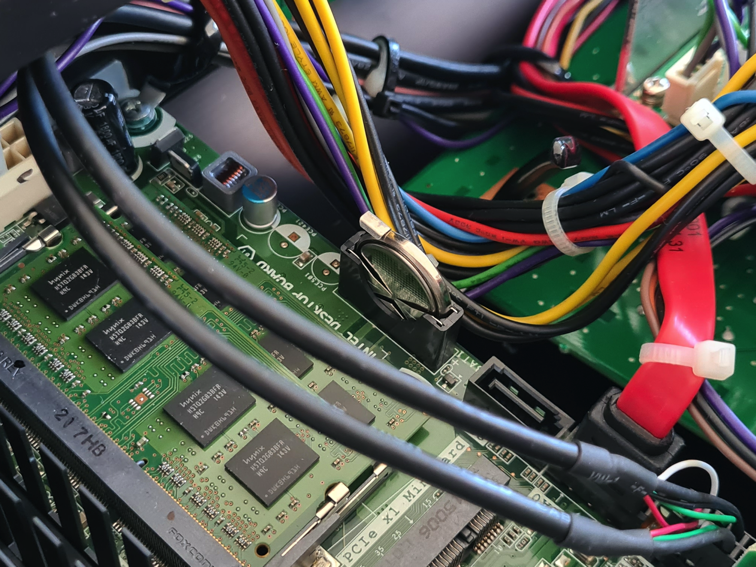
I can’t believe my Kronos is already over 10 years old. But it is, and as a consequence, it recently complained about a drained battery.

To do so, I used the following:
- CR2032 battery
- Some pillow or similar to prevent the controls from being damaged
- Screw driver
- Small wooden or plastic stick
- Rubber gloves
- Anti-static wrist strap, if possible (admittedly, I had none)
Here’s what I did:
- Disconnect all cables from the Kronos.
- Place it upside-down on some smooth surface. Use pillows or similar to grant some clearance for its controls.
- There are two different kinds of screws. Mark the bigger ones e.g. by using some tape.

- Remove all screws from the bottom panel, except the screws of the rubber feet. Keep the two sizes separated from each other.
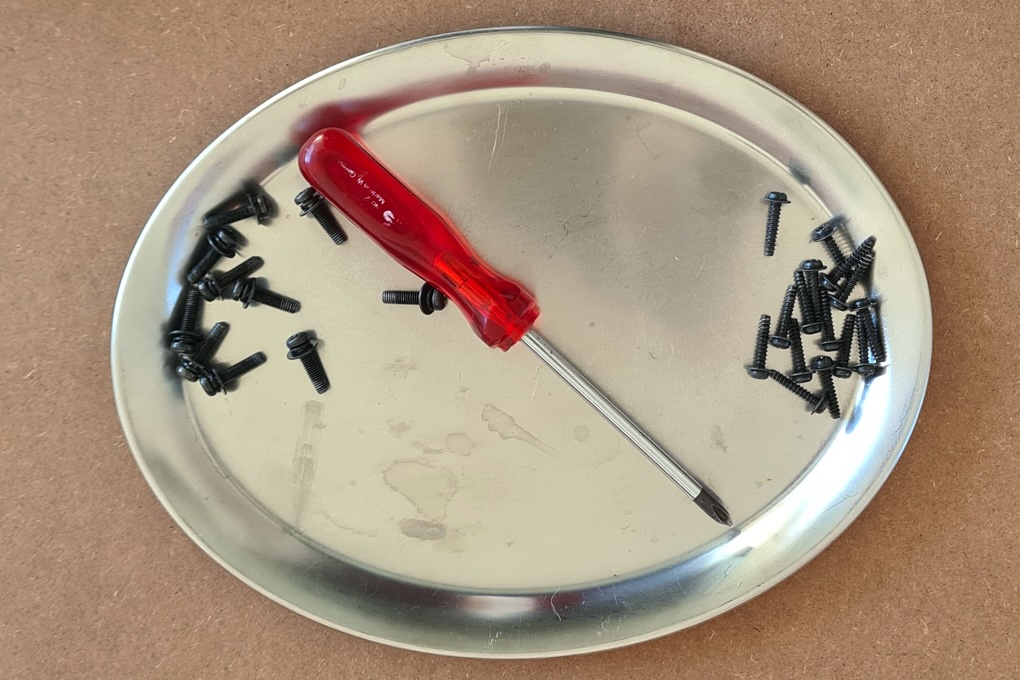
- Remove the bottom panel (a screwdriver in one of the drillings should help to lift it).

- Put on the gloves and the anti-static wrist strap (aka e-bracelet), if possible.
- Locate the battery slot on the left hand side. Use some wooden or plastic stick to bend the clip backwards, then remove the battery (see topmost image).
- Insert a new battery, without touching it with your fingers to prevent corrosion (hence the gloves).
- Reattach the bottom board with the screws according to the markers. Tighten the screws, starting with the ones in the middle. Ensure to forget none.
- Boot up the Kronos. Press the DISK button. Select the file, then the utility page. From the menu in the top right corner, select »Set Date/Time«. Use the value controller to enter the correct data. Press OK.
- Reboot the Kronos.
That’s it. The battery alert should be gone for the next decade.
Fixing a macOS Sequoia webdav issue

Since several years, I run a privately hosted instance of Nextcloud for synchronizing files, calendars, and contacts across several devices. Even Apple’s calendar and contacts apps sync’ed nicely. At least until I recently tried to connect a machine running macOS Sequoia, which denied to collaborate.

The issue was caused by the fact that I didn’t install Nextcloud in the document root of my web server, but in a subdirectory (e.g. »yourdomain.com/nextcloud/«) instead. To circumvent the issue, I consulted Nextcloud’s documentation and placed a .htaccess file with the following content in the document root of the web server:
<IfModule mod_rewrite.c> RewriteEngine on RewriteRule ^\.well-known/carddav /nextcloud/remote.php/dav [R=301,L] RewriteRule ^\.well-known/caldav /nextcloud/remote.php/dav [R=301,L] RewriteRule ^\.well-known/webfinger /nextcloud/index.php/.well-known/webfinger [R=301,L] RewriteRule ^\.well-known/nodeinfo /nextcloud/index.php/.well-known/nodeinfo [R=301,L] </IfModule>
Of course you need to adjust the subdirectory name »/nextcloud/« to fit your installation. Still, the abbreviated address as used in Nextcloud’s documentation didn’t do the trick for me. I still needed to use the deep URLs as provided by Nextcloud’s UI:
- Contacts: https://yourdomain.com/nextcloud/remote.php/dav/addressbooks/users/username/contacts/
- Calendars: https://yourdomain.com/nextcloud/remote.php/dav/principals/users/username/
I’m grateful for the excellent documentation of Nextcloud and uber.space, as well as the support service of uber.space who helped me to cope with the last hurdles. In case you are looking for a cool hosting provider, don’t hesitate to give them a try.
Connecting thumb pistons with GrandOrgue

Many home organ consoles are equipped with thumb pistons. Some of them are dedicated to control combinations. When being pressed, they usually also send some MIDI command to MIDI out. In case of this Johannus console (branded as Kisselbach), the pistons send a SysEx command. In GrandOrgue, Ctrl-click on a combination slot, then »Wait for event«, then press the desired piston and the piston is connected to the combination slot. This works well for memory bank 1, pistons 1 through 8.
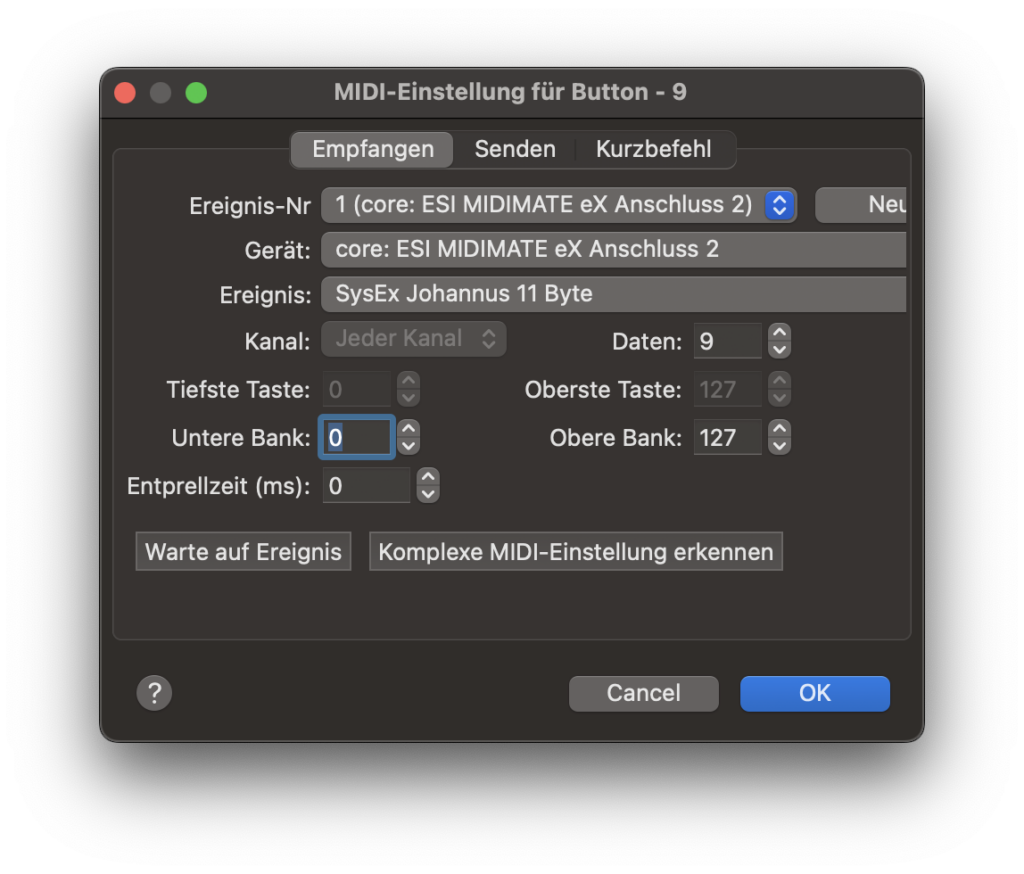
However, this is not the case for all the other memory banks. Here’s the SysEx commands:
Mem: 1, Pistons 1-8
F0 00 4A 4F 48 41 53 00 10 09 F7
F0 00 4A 4F 48 41 53 00 10 0A F7
F0 00 4A 4F 48 41 53 00 10 0B F7
F0 00 4A 4F 48 41 53 00 10 0C F7
F0 00 4A 4F 48 41 53 00 10 0D F7
F0 00 4A 4F 48 41 53 00 10 0E F7
F0 00 4A 4F 48 41 53 00 10 0F F7
F0 00 4A 4F 48 41 53 00 10 10 F7
Mem: 2, Pistons 1-8
F0 00 4A 4F 48 41 53 01 10 09 F7
F0 00 4A 4F 48 41 53 01 10 0A F7
F0 00 4A 4F 48 41 53 01 10 0B F7
F0 00 4A 4F 48 41 53 01 10 0C F7
F0 00 4A 4F 48 41 53 01 10 0D F7
F0 00 4A 4F 48 41 53 01 10 0E F7
F0 00 4A 4F 48 41 53 01 10 0F F7
F0 00 4A 4F 48 41 53 01 10 10 F7
Mem: 3, Pistons 1-8
F0 00 4A 4F 48 41 53 02 10 09 F7
F0 00 4A 4F 48 41 53 02 10 0A F7
F0 00 4A 4F 48 41 53 02 10 0B F7
F0 00 4A 4F 48 41 53 02 10 0C F7
F0 00 4A 4F 48 41 53 02 10 0D F7
F0 00 4A 4F 48 41 53 02 10 0E F7
F0 00 4A 4F 48 41 53 02 10 0F F7
F0 00 4A 4F 48 41 53 02 10 10 F7
The tenth byte always is 0x09 through 0x10 (the eight pistons). The eights byte contains the memory bank. However, the auto detection of GrandOrgue fails to recognize it properly. Fortunately it is possible to configure it manually by the field lower bank.
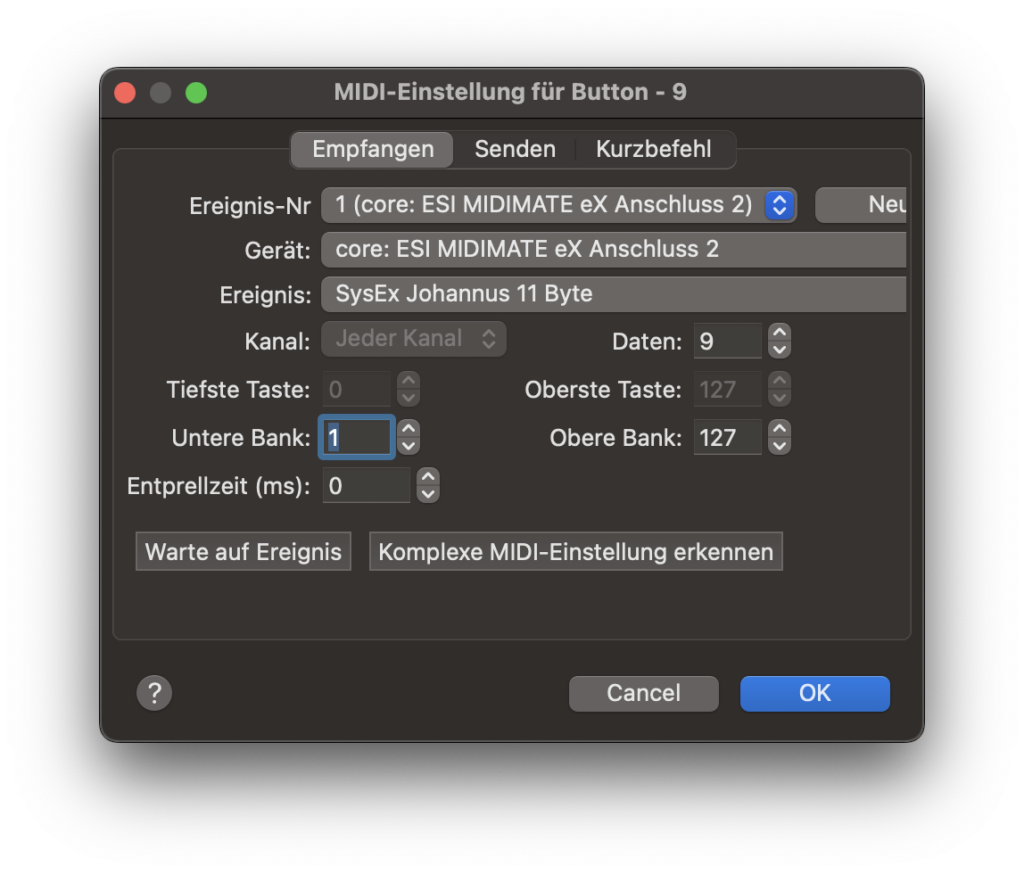
GrandOrgue has a total of 50 general combinations. I recommend to configure all of them. Do not forget to save the organ settings. From now on, the console controls can be used to control all of the 50 general combinations of GrandOrgue, not only 1-8.
Cultural overdose at Barcelona
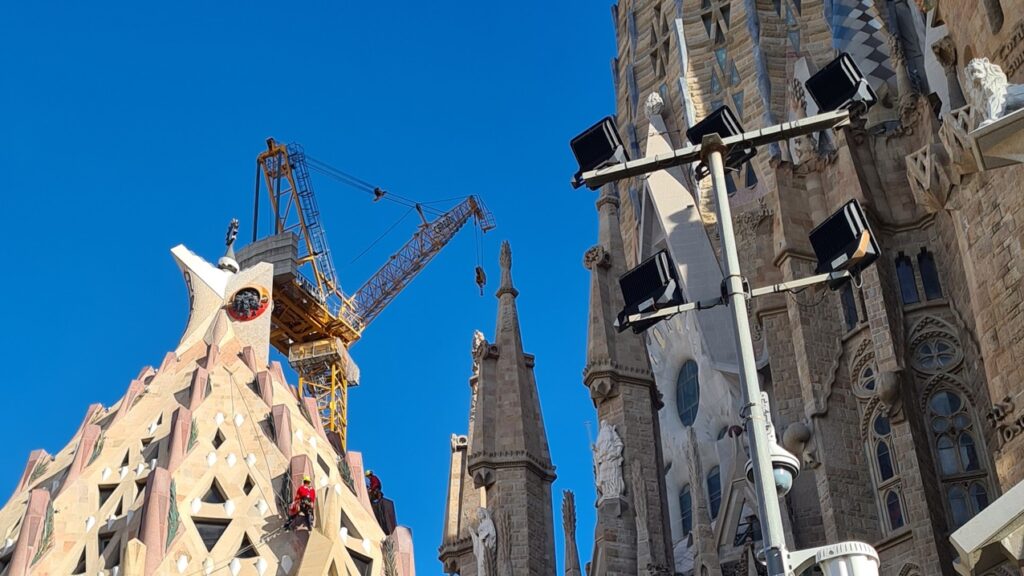
Barcelona features a rather mild climate during the winter months, where temperatures during afternoon may reach about 18°C. So, just like me, many visitors may have prolonged their Xmas holidays to escape their cold homelands, so the whole city was quite crowded.
Many of you may be aware of the incredible works by Antoni Gaudí, the most popular being the Sagrada Familia cathedral. The most essential ticket includes the cathedral audio-guided electronically, plus the exhibition in the cellar (don’t miss it), excluding a visit to one of the towers or a tour guided by some human being. The audio guide consists of an app you should install to your handset before the visit, and you probably may also want to have your earphones at hand. Guided tours and tower visits are both on high demand. Three days in advance, I had bad luck getting a guided tour in german or english language. Hence I strongly recommend to book your tickets online at least one week in advance.
Further works of Gaudí can be found at various places, e.g. the Park Güell (containing the Casa Museu Gaudí), Palau Güell, Casa Batlló or Casa Mila (“the quarry”). I visited the first three of the four and can recommend them. The entry fees at least partly are noteworthy, the most expensive being the Casa Battlló. Even the cheapest online tickets are well above 30 €, except for inhabitants of spain, who can save 50%. Silver and gold tickets, including augmented reality or access to the private family rooms of the building, cost even more.

Of course Barcelona has much more on offer, to name just a few:
- Museu Nacional d’Art de Catalunya (MNAC).
- Museo Picasso
- Museu Marítim de Barcelona
- Music in churches
- Organ recitals and other events in the Basílica de la Mercè
- Organ recitals in Barcelona Cathedral
- The ESMUC (Escola Superior de Música de Catalunya) Vespres d’Antiga concert season in Santa Maria del Pi
- The Museu de la musica, exposing historic instruments from all over the world, including pipe organs, synthesizers, and even an Atari 1040 ST, a computer with built-in MIDI Interface which helped to revolutionize how music is being composed using software sequencers.
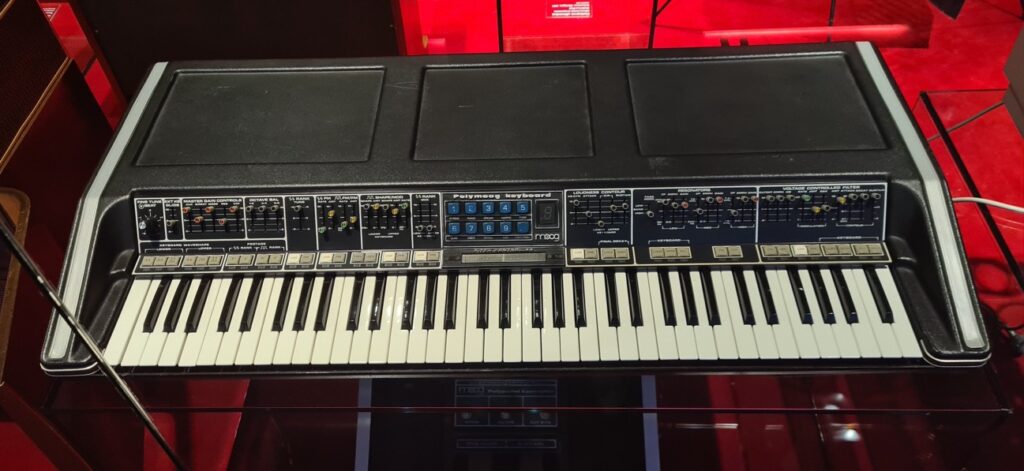
As you can see, a fistful of days aren’t enough for a deep dive. I immediately felt the need to return rather sooner than later.
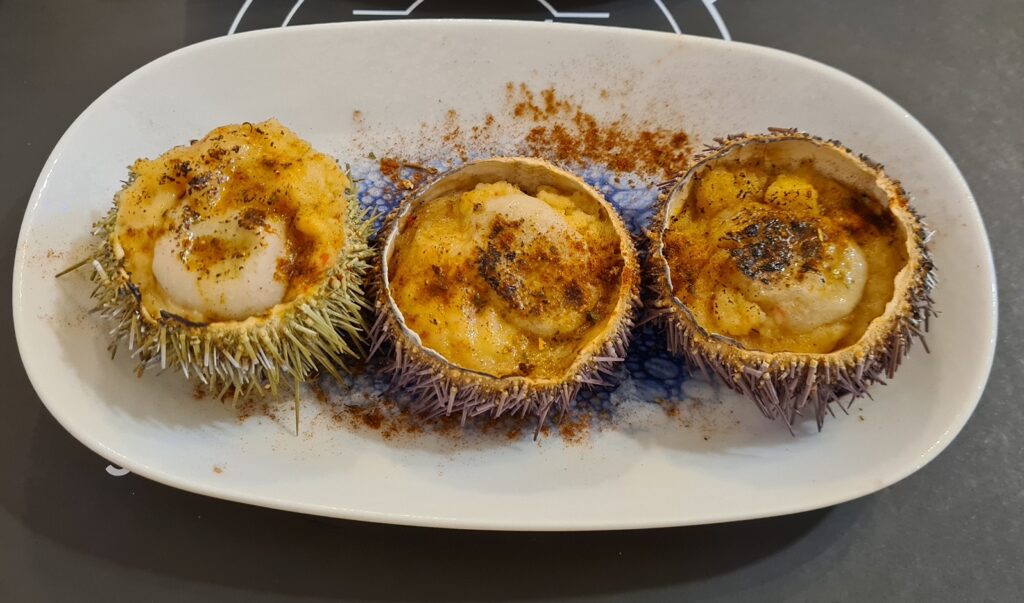
Exceptional Flamenco Performance
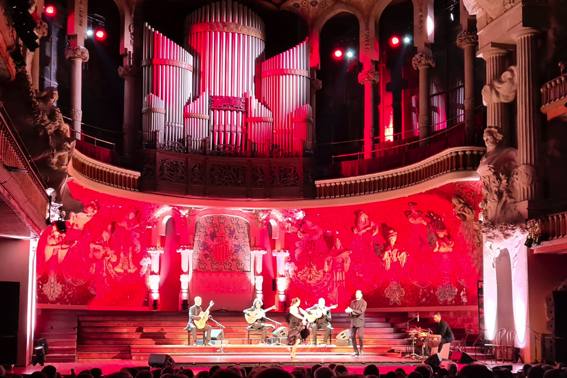
Since several decades, my core musical taste focusses on Jazzrock resp. Fusion music. Via Chick Corea and Al di Meola I also got in touch with spanish music, e.g. the works of Paco de Lucia.
On sunday evening I had the occasion to attend a concert featuring the Barcelona Guitar Trio (Alí Arango, Xavier Coll, Luis Robisco, Youtube), a percussionist (Lucas Balbo), and two dancers (Carolina Morgado, José Manuel Álvarez) at the Palau de la Música, performing various works, including many of Paco, but also Chick’s Spain (recorded at the very same place, the palau de la musica, in 2007), plus works of Manuel de Falla, Federico García Lorca and others.
Frankly, this was an absolutely outstanding concert, performed by real masters. Have you ever heard four musicians playing one single guitar? There are further upcoming events, so get your ticket :) .
Extra challenge – short octaves
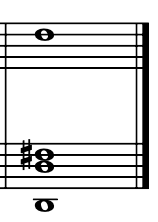
In baroque organ music, I sometimes stumble upon weird intervals which obviously are impossible to play (unless someone is blessed with giant hands). So what do those notes want to tell us?
Recently, I had the occasion to visit the console of the historic Schnitger organ in Lüdingworth, which is equipped with a short octave. In early music, the bass range of instruments was more and more enhanced. However, due to the mean tone temperament, the notes C#, D#, F#, and G# of the great octave were almost never used. As a consequence, they were dropped and several systems of short octaves used. The one of Lüdingworth was quite common. The following figure shows the – from today’s point of view rather odd – arrangement of the low octave (german notation, where B is labeled as H and B flat as B).
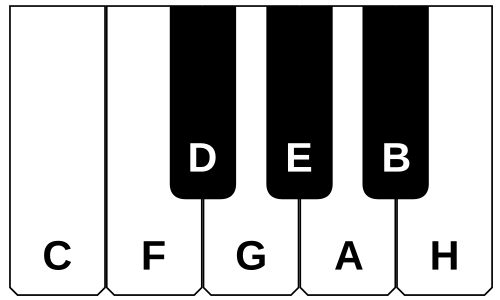
In case someone wants to cope with that, one obviously needs to practice the pieces anew, since the fingering is different than the one one would use on a modern instrument. And if using a short octave instrument (or a virtual instrument reconfigured accordingly) one can also play the abovementioned intervals with ease, since D actually resides on the key of F#.
Die Orgeln der Bauerndome im Hadelner Land



Zufällig habe ich mitbekommen, dass die Orgelakademie Stade am Freitag (Allerheiligen) eine Exkursion zu den »3 Königinnen in 3 Bauerndomen« veranstaltet, von denen das Otterndorfer Gloger-Instrument frisch restauriert erst vor wenigen Tagen wieder in Betrieb genommen wurde. Am Samstag sollte es deshalb an letzterem zusätzlich ein Konzert geben. Von den Instrumenten in Lüdingworth und Altenbruch gibt es von Sonus Paradisi (Lüdingworth, Altenbruch) jeweils Samplesets für Hauptwerk, die ich beide für alte norddeutsche Orgelmusik nutze.
Ich bin deshalb am Donnerstag sehr spontan aufgebrochen, um die Instrumente sehen, hören und näher kennenlernen zu können. Der Reiseaufwand war zwar nicht ganz unerheblich, hat sich aber sehr gelohnt. Ich bin den Veranstaltern, insbesondere Martin Böcker, sehr dankbar für ihr enormes Engagement.
Orgaos de tubos em portugal
About 9 years ago I started to play baroque pipe organ music. I rather focused on french but on german composers, and as a consequence, I also got in touch with iberian composers like Juan Cabanilles. French baroque organs are different than german ones, and iberian baroque organs are different than french ones. Here are the main differences:
- Often, the space for the organs is extremely limited. As a consequence, the organs often have no or a very limited pedalboard, and the organs often have only one or two keybeds.
- Stops usually are split in the middle of the keybed, so the descant and bass can be registered differently. This compensates for the lack of keybeds, and several iberian baroque organ music expects the instruments to be built like this; the left half of the keybed can be used for accompaniment, the right for solo voices.
- Some reed stop pipes are placed horizontally in the facade of the instruments, providing special timbres. Sometimes such stops can also be found on classical french («Trompette en chamade») or 20th century german instruments (»Spanische Trompete«). But still, the typical sound of iberian reeds is unrivaled.
- Sometimes, in bigger cathedrals, two organs are placed face to face on either side’s wall (not to mention Mafra, where you’ll find the incredible amount of six instruments).
I have read about those instruments, listened to recordings of them, and played a sample set (I do neither have a relationship with the provider, nor do I get paid for this link) of the Segovia organ. Despite digital tools, there’ s still no thing as the real thing. So I spent a couple of days visiting important instruments in portugal.






















Obviously, portugal hosts several typical iberian baroque instruments. I had good luck so as to listen to three of them. In case you want to attend some concerts as well, events in Mafra can be found here, and the organ festival will be continued in 2025. There are concerts being organized by Coimbra, Arganil, Cantanhede and Miranda do Corvo. This page also lists instruments found in Coimbra. Concerning concerts at the cathedral of Porto, this page may be helpful. Finally, there’s the »Festival Internacional Orgao & Musica Sacra«.
Konzertsaison an der Dubois-Orgel vorüber
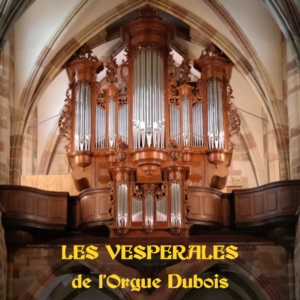
Am Mittwoch Abend konnte ich an der Stellwagen-Orgel in Stralsund ein tolles Konzert von Thomas Ospital hören. Hier das Programm:
- Charles Racquet (1598-1664)
- Fantaisie du 8ème ton sur le Regina Coeli
- Jean Adam Guilain (ca. 1680-1739) – Suite du premier ton
- Plein jeu
- Trio
- Duo
- Basse de trompette
- Récit
- Dialogue
- Thomas OSPITAL (1990)
- Improvisation I
- Antonio de Cabezon (1510-1566)
- Diferencias sobre el Canto Llano del Caballero
- Pablo Bruna (1611-1679)
- Tiento de segundo tono sobre la letania de la Virgen
- Thomas OSPITAL (1990)
- Improvisation II
- Johann Sebastian Bach (1685-1750) – Concerto d-moll nach Antonio Vivaldi (BWV 596)
- Allegro
- Grave
- Fugue
- Largo e spiccato
- Finale Allegro
- Toccata und Fuge d-moll (BWV 538, “Dorische”)
Gestern spielte zum krönenden Abschluss der diesjährigen Vespérales Maria Esslová ein tolles Konzert. Auch hier das Programm:
- Georg Muffat (1653-1704) – Apparatus musico-organisticus
- Toccata prima
- Girolamo Frescobaldi (1583-1643)
- Aria detto baletto
- Josef Ferdinand Norbert Seger (1716-1782)
- Toccata e fuga d moll
- Jürgen Essl (1961)
- Reple corda
- Johann Pachelbel (1653-1706)
- Choralpartita »Was Gott tut, das ist wohlgetan« (9 Teile)
- Jean-Francois Dandrieu (1682-1738) – Magnificat du Premier Livre de Pièces d’Orgue
- Plein jeu
- Basse et Dessus de Trompette
- Récit de Trompette séparée ou de Cromorne
- Dialogue
- Marie Esslová (1987) – Improvisation: Freie musikalische Miniaturen
- Luft
- Feuer
- Wasser
- Georg Muffat (1653-1704) – Apparatus musico-organisticus
- Toccata duodecima et ultima
Es waren auch sonst dieses Jahr wieder einige außergewöhnliche Konzerte dabei. Ich freue mich bereits jetzt auf die Saison 2025.
Orgue Dubois, Wissembourg – Masterclass 2024
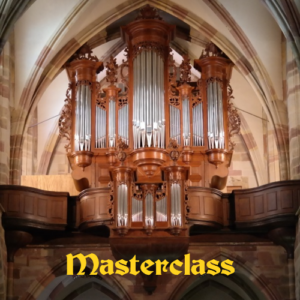
In two weeks, I’ll attend the masterclass with Aude Heurtematte at the Dubois organ of Sts. Pierre & Paul in Wissenbourg. Here’s what I’ll probably prepare:
- Joan Cabanilles (1644-1712) – Tiento Por A la mi re
- Abraham van den Kerckhoven (1618-1702) – Versus primi toni – Cocquiel-Manuscript N° 033, 037, 048, 050, 052, 055, 058, 157, 158, 162
- Dieterich Buxtehude (ca. 1637-1707) – Passacaglia in d minor (BuxWV 161)
I learned a lot during last year’s course in Kaufungen with Torsten Laux, and so I will do during those two days with other organ enthusiasts.
The Pomodoro Technique
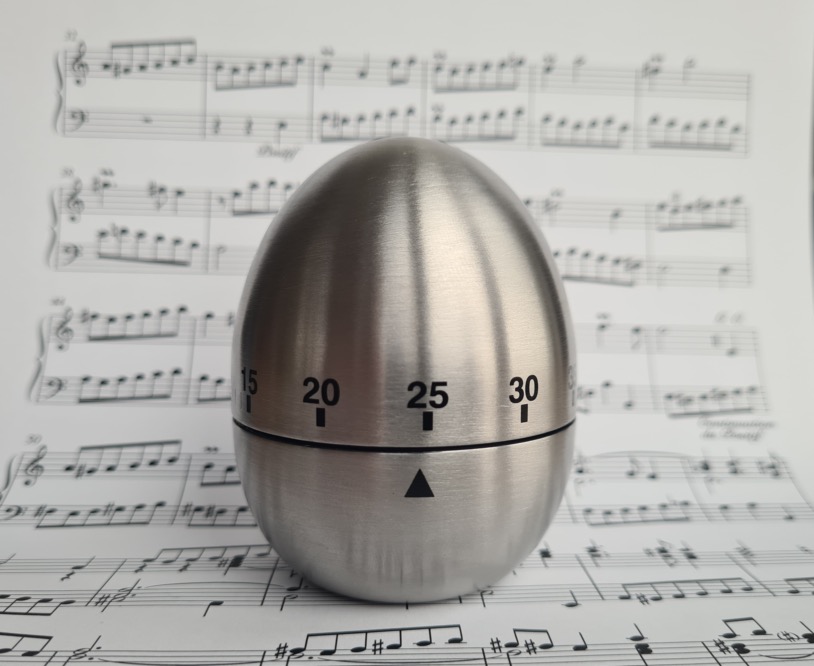
Via Jazer Lee, I recently got known to the Pomodoro Technique:
It uses a kitchen timer to break work into intervals, typically 25 minutes in length, separated by short breaks.
I immediately tried it out during my recent practice sessions and am rather impressed by it’s effect. It massively helps me to focus on the task currently at hand and to ignore any distraction until the end of the pomodoro. The most interesting thing about those distractions is: I do not work on them at the end of the pomodoro. Instead, I enjoy the 5 minutes break and restart practising immediately after it. Obviously most distractions don’t require immediate action.
Admittedly, it is damn hard to practise four pomodoros (roughly two hours) in a row. At the end of the third pomodoro, my concentrativeness decreases significantly. And that’s absolutely OK. The pomodoros grant me much more focused and intense practise sessions than ever before, regardless wether i use three or four in a row.
Möve Voyager pedelec
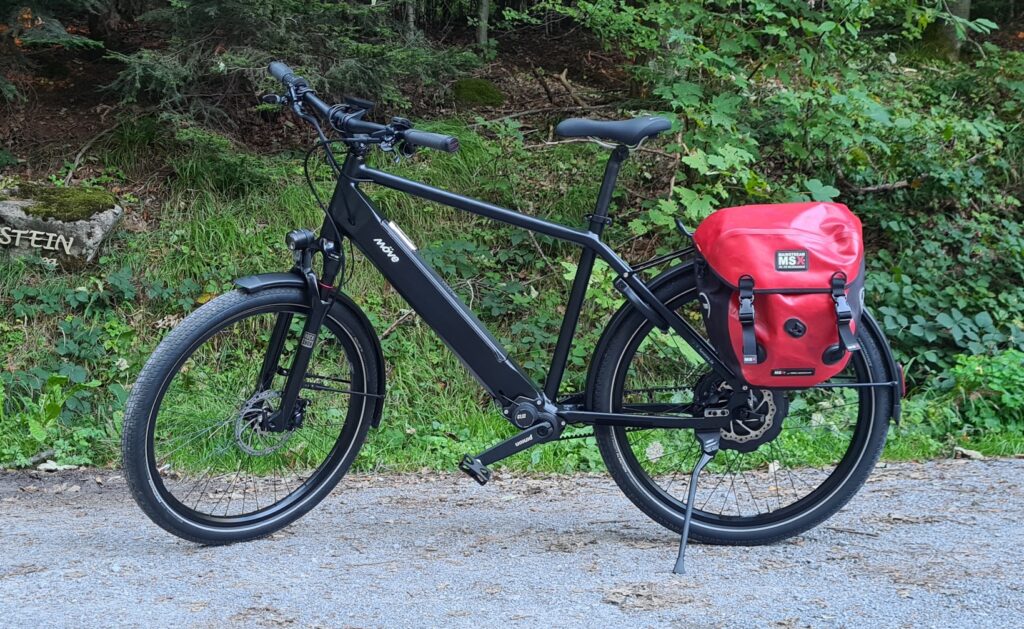
Almost exactly 13 years ago, I bought a Gudereit LC-R, which a german biking magazine had labeled as “Rohloff rocket”. It served me very well (I’m still using it) and was the perfect bike for the quite flat upper rhine plane. But 18 months ago I moved to a rather hilly region. As a consequence, my biking activities dropped down to near zero. A replacement was mandatory.
The Möve Voyager features a Pinion C1.12, a Gates Carbon Drive, a Neodrives Z20 (40 Nm) and a battery with 36V current and a capacity of 625 Wh. I immediately did a test ride of about 18 km this evening, including 2 inclines I never had taken before. So at first glance, I’m quite content.
Neulich, im Silbermann-Museum
Im Rahmen der Silbermann-Tage konnte ich mehrere Konzerte hören, unter anderem gestern Mittag an der großen Silbermannorgel im Freiberger Dom «Le Goût Français à Freiberg» mit Pieter van Dijk sowie heute Mittag an der Silbermannorgel in der Schlosskapelle Augustusburg »Beziehungsweisen« mit Afonso Torres. Bei beiden Instrumenten hat man das Gefühl, dass sie perfekt an den Raum angepasst sind. Pieter van Dijk hat unter anderem eine französische Orgelmesse von Guilain ausgewählt, die sich auf dem Instrument erstaunlich authentisch wiedergeben ließ. Beeindruckt haben mich außerdem die Interpretationen von Afonso Torres, der unter anderem »Mein junges Leben hat ein End« von Jan Pieterszoon Sweelinck auflegte (ich kann die Aufnahme von Matthias Havinga sehr empfehlen).
Im Silbermann-Museum Frauenstein findet sich eine Kopie eines einmanualigen Instrumentes von Gottfried Silbermann. Nach mehreren Eigentümerwechseln steht das weitestgehend in den Originalzustand zurückversetzte Instrument heute im Bremer Dom. Das Instrument im Museum kann man spielen, sofern man bereit ist, dafür 20 € auszugeben. Das ist viel Geld (und ich hatte leider nur eine gute halbe Stunde Zeit), relativiert sich aber, wenn man bedenkt, was ein solches Instrument kostet.
Das Instrument hat 8 Register und einen Tremulanten (der 10. Zug ist ein Blindknopf) auf einem Manual ohne Pedal (sic!). Dafür finden sich zwei Quinten (Quinta 1 1/2 und Nasat) sowie eine Terz (“Sesquialtera”). Man hat also einen reichhaltigen Obertonaufbau zur Verfügung. Nachteilig ist, dass der Organist beim Spielen sehr viel Direktschall abbekommt. Andererseits ist das Instrument durch die kurze Traktur sehr leichtgängig und lässt sich fast schon spielen wie ein Cembalo. Erneut hat sich ausgezahlt, dass ich neuerdings viele Werke erarbeitet habe, die ohne Pedal auskommen, wie beispielsweise die von William Byrd.
Dass ich in Frauenstein vorbeigekommen bin, war einem Zufall geschuldet, um den ich im Nachhinein sehr dankbar bin. Ich habe mir vorgenommen, wiederzukommen. Dann aber besser vorbereitet und mit ausreichend Zeit.
The Korg prologue synthesizer
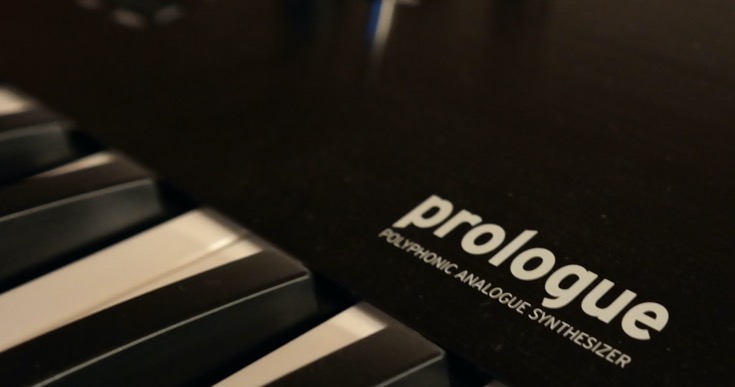
After the minilogue (2016) and the monologue (2017), Korg released the prologue in 2018. Finally keyboardists get something similar to the minilogue with full sized keys (available in flavours of 8 voices and 49 keys respectively 16 voices and 61 keys). What remained consistent were the two analogue oscillators and their waveshaping capabilities.
The filter design differs significantly. Additionally, the prologue introduces a third (fully digital) oscillator, called Multi Engine. It provides either a noise generator, a VPM/FM oscillator, or 16 oscillator slots the user can populate via USB. As with the minilogue xd, such oscillators are available e.g. by hammondeggs or Sound Mangling (Tim Shoebridge) or can be created by the user using the publicly available logue SDK.
The full size keybed is convenient to play, though it lacks aftertouch capabilities. Like the xd, it allows to control several of its parameters via aftertouch using external keyboards, though. Surprisingly it shares a further limitation with the xd, the complete absence of velocity control except for the two envelope generators. At least it provides a sustain level for its 2nd envelope generator, which sets it apart from the xd.
With the xd, it shares its 500 program slots, of which 200 are prepopulated by factory presets. Unlike the minilogue, neither the prologue nor the xd do benefit of the additional soundsets.
One review I read was like “The prologue sounds great, though it is not very deep”. What it does, it does extremely well. What it lacks is modulation capabilities. One LFO only, two standard envelopes, limited velocity support and the lack of a modulation matrix. Some may tend to go for a Sequential Prophet 08 or REV2. However, since it sounds differently, it may not be a real option.
Moog Sub37 sold
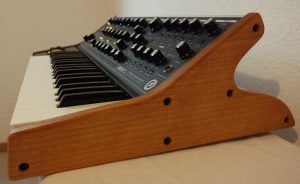
Since I’m playing baroque pipe organ music for a couple of years, I have little time to play other instruments. Thus I sold the Moog Sub37 which was sitting in its case for a long time.
It’s an absolute phantastic synth, regardless whether we are talking about hardware, capabilities, or sound. I’m still as impressed as I was in 2015.
Expressive E – Osmose
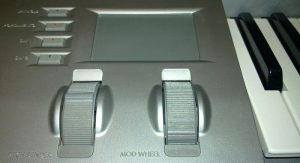
Korg Z1 controllers
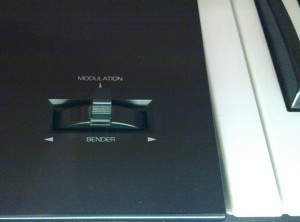
The (in)famous lever of a Roland A-50 MIDI Keyboard Controller
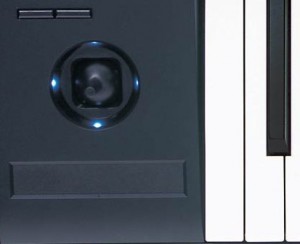
Korg Kronos ribbon controller and joystick
Anders als Gitarristen hat man als Keyboarder keinen direkten Einfluss auf die Tonhöhe. Dafür finden sich an Synthesizern üblicherweise Spielhilfen, um Vibrato und Tonhöhenbeugungen vornehmen zu können. Mit den klassischen Rädern bin ich nie richtig warm geworden. Glücklicherweise verfügte mein langjähriges Masterkeyboard (Roland A50) über den Rolandtypischen Jammerhaken. Für Korg ist der Joystick typisch. Die Systhesizer verfügen zudem meist über Aftertouch. Nach dem Anschlag einer Taste kann man durch “Nachdrücken” klangliche Parameter steuern. Die genannten Spielhilfen (außer dem selten zu findenden polyphonen Aftertouch) beeinflussen alle gespielten Töne gleichzeitig. Expressives Spiel einzelner Töne lässt sich damit nicht erreichen. Für die separaten Controller muss man allerdings ohnehin eine Hand von der Tastatur nehmen.
Mit großem Interesse verfolge ich die letzten Jahre Geräte wie beispielsweise von Haken Audio (Continuum Fingerboard und Continuu Mini) oder die Seaboards von Roli.
Expressive E rührt derzeit mittels eines Prototypen die Werbetrommel für ihren neuen, äußerst expressiv spielbaren Synthesizer Osmose. Unter anderen findet sich auch ein Video mit Jordan Rudess. Auch Engadget hat ein Video veröffentlicht. Zum Einsatz kommt hierbei MIDI polyphonic expression (MPE), die einerseits von den Bedienelementen erzeugt und andererseits von der Klangerzeugung auch verarbeitet werden können muss. Dazu passend kommt im Osmose Physical Modeling zum Einsatz.
In den Videos kommt das natürlich toll ‘rüber. Allerdings ist mir klar, dass ich als unterdurchschnittlicher Hobbymusiker sehr lange üben müsste, um vergleichbares aus einem solchen Instrument zu holen. Der “Sofort-Kaufen”-Impuls blieb daher bisher aus. Ich will ja auch morgen noch was auszuprobieren haben :) .

